December 17, 2017 - January 13, 2018: Issue 342
Lisa Ratcliff
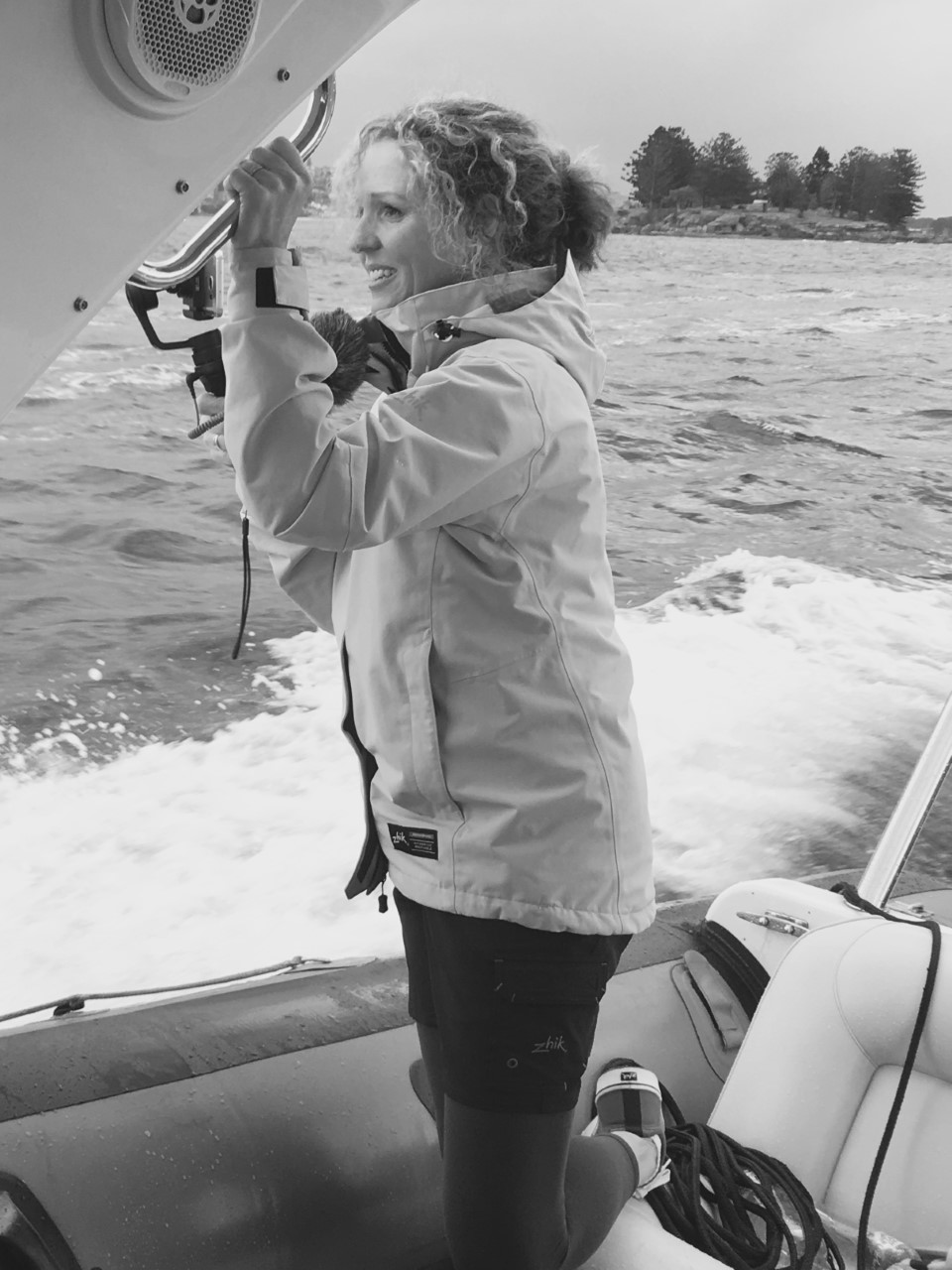
Lisa at work (play) - photo courtesy Mandy
The lady whose sailing articles features every week in specialist sailing magazines, as well as here, in her own hometown news service, has been nominated for sailing awards for her work multiple times and won the 2007 Yachting Australia media award.
The proprietor of On Course Communications (OCC)Lisa is a Freelance event manager and event journalist/PR professional specialised in covering sailing events and classes in Australia and internationally. Lisa Ratcliff is industry recognised and has been awarded for her work covering most of the major Australian regattas and races including the Rolex Sydney Hobart yacht race, Hamilton Island Race Week and World Sailing Series, as well as covering three world championships in different classes.
Visit: https://www.occ.net.au/
Lisa is a creative and independent writer who can provide advice and comprehensive mainstream and social media coverage, including on-water videos.
With over 20 years experience in sailing journalism you could say that saltwater is in her blood - so much so that this year she's sailing the Sydney to Hobart, the legendary race her pen has brought you details of through years past - which is a whole other side of a mainsheet!
Lisa is also a local sailor, who clearly loves being on the water and staying on course for developing the conversation around everything aquatic means her skills at developing focus points in other areas of sport and the environment are a natural progression.
This week, and finally, that lady who brings you your sailing news every week:
When and where were you born?
I was born in Canada in 1970.
When did you move to Australia?
I was two. We lived in North Epping to begin with and while there my father built a lime green Swanson 42 in the front yard.
My parents were looking for somewhere to moor it and came to Pittwater where they found a mooring that was available not far from a two-storey cedar house with a ‘for sale’ sign on it. We moved during Easter 1978 and the rest is history.
When my parents separated not long after, my father left with the Swanson and mum and us three kids stayed until the late 1980s.
So you went to Mona Vale Public School?
Yes, Mona Vale then Pittwater High. We all then left for a period of time at the end of the 1980’s – I left in 1989 and then came back to the island in 2009 with my own family and bought around the corner from the family home, on the south west side facing McCarrs Creek.
Were you sailing when here when younger?
Only recreationally. I knew of kids who were sailing competitively out of the RPAYC but I wasn’t switched on to that program, we just mucked about on whatever boat mum happened to pick up for us cheaply – a Hobie, Dragon, Manly Junior …it was all about having fun.
You moved to Canberra to study to get your degree – what was Canberra like after being on Pittwater?
Cold. Very cold and then hot – I found the extremes in weather very difficult and it is SO far from the ocean.
I’ve become more in tune with the ocean as I’ve become older; I don’t think I was aware in my teenage years and early 20s how restorative it is.
By my Uni days mum was living at Wollongong near the ocean, and I’d go there to get my beach time.
Sailing kicked off again through my mum I guess; you know parents say if you want to meet people join a club? I always used to laugh at her for that but it turned out to be true!
I worked for a PR Company in Bondi Junction who had EastSail as a client and when I realised I had way too much time on my hands on weekends they put me on a boat with one of the CYCA Club Directors and in turn I met the club’s General Manager. This was late 1995 and at the time the PA to the CEO handled the media enquiries - they didn’t have anyone specialised in a communications capacity.
The CEO at that time then bailed me up in the Grand Chancellor hotel foyer down in Hobart – I’ll never forget. It was the end of the 1995 Sydney to Hobart and I’d gone down to meet Luke when the GM Bruce said, ‘we need to have a chat back in Sydney’.
Years later he asked me; ‘do you know why I hired you?’ I answered, ‘not really,’ and his answer was ‘because of your handshake.’. This is a lesson I’ve instilled in my kids – shake firmly and make eye contact. I had the PR Degree and some boating background, but I didn’t come with ‘Sailing Journalist’ skills – he was impressed by my firm handshake.
Previously I’d met Luke who was sailing on a different boat to me in the CYCA Wednesday Twilight Series. We spent a lot of time ogling each other across the water and eventually started talking assisted by a few too many Mount Gay rums. We married in 1997 at Manly Yacht Club.
I spent 12 years at the CYCA (Cruising Yacht Club of Australia) and was so fortunate to spend my early years under the stewardship of sailing journalist Peter Campbell, who is still writing sailing stories in his 90’s.
Sailing three times a week in the early days and crafting my knowledge and writing style putting together story after story, plus developing relationships with owners and crews, made it like an apprenticeship. There is no course to learn sailing journalism, it’s understanding the lingo, being amongst the post-race festivities and among the sailors, earning their trust in what you write. It’s picking up the terminology but being able to then communicate it to others passionately and in a way can be understood.
I think in the first few years I tried to be clever in my writing because I wanted my peers to see me as their equal but as I went on my writing became less about the boat and the technical aspects of the sailing and much more about the people. That’s where the joy is, and that’s what has kept me going for 20 years.
Even though I look like I’m having the most incredibly glamorous life I’m essentially still writing about the same people and elements of sport over and over. I might be covering a small fleet and group of owners at six regattas per year, for example the MC38s, and my challenge is to find the angle and what makes each regatta unique. I have a duty to myself and my peers to keep my writing fresh, to keep it interesting for people who are interested in those boats, and so far I’ve been able to find enough energy and love for what I do to keep my content genuinely engaging.
You are a woman excelling in what has traditionally been a man’s world, even though huge shifts are now occurring in including women – what has been your experience of that?
There have always been a lot of women working in Sailing Administration, looking after membership and race management but the balance is disproportionate in terms of club board membership, National Authority Boards and in the upper echelon of sailing.
I was disappointed that during the last America’s Cup to notice that whenever a technical spokesperson was called on to make a comment during the TV coverage, it was always a male. Plus the boats used and the strength requirement precluded women as crew members.
This year when I was at Hamilton Race Week I was interviewing Adrienne Cahalan, one of the world’s most renowned professional navigators who completed her 25th Sydney to Hobart earlier this year – a record. We were looking around the Grand Prix end of the marina and Stacey Jackson, now in the midst of her second Volvo Ocean Race, was the only female in among the pro and semi-pro teams.
The participation level for women in the sport at a club level is pretty healthy – you only have to look at twilight and Saturday races on Pittwater. At the highest level of World Sailing the discussion is ongoing about when and why women drop out of the sport and why there are so few or no women at the level of the America’s Cup, Volvo Ocean Race and Extreme Series.
Part of the reasoning relates to how women choose to split their time up. Women still tend to be the ones who stay home with young children while the guys continue their sport. I do have to say that the men of my generation and those younger are certainly much more mindful of balancing a young family with sailing. When I started out in the industry in 1996 the era of the men disappearing for long periods of time on lengthy ocean races was beginning to change. Short course racing and twilight sailing is definitely what people want more of, so they can duck out for a couple of hours and not come home to a resentful family.
There’s also an extremely low level of female boat ownership which may reflect income and women being thriftier when it comes to disposable income. There’s a sense that more men are happier to go out and buy boats than women are.
You’ve also embraced the dynamic elements now being incorporated into sailing reporting; you record videos, take you own photos when needed and can also post to a divisions Facebook or twitter platforms mid regatta – what skills have you had to develop to be part of that new world of sailing media?
There has been such a shift away from print media to online platforms and instant publishing that I felt if I didn’t keep up with that movement, and learn the skills needed I was going to become redundant. The days of being able to only write a great story are no more. You also have to take into account that if have additional social media skills then you offer your clients added value.
I also admit that using these extra skills such as filming, photography and live interviews, make my day more interesting.
Years ago I would go out with a notepad and a pen and sit for hours watching boats go around and around buoys. Now I don’t take a pen or a piece of paper because I’m capturing it on video. I’m not of that generation where the technology is easy for me; I’ve had to force myself to do it and my teenagers help me with editing video. Now I’m often speaking directly to the audience whereas I’ve always been a very much behind the scenes type of person; for example I’ll go into a club and someone will say ‘so you’re Lisa Ratcliff, I’ve been reading your stuff for years…’ My face is not very familiar, and I still don’t turn the camera around to point at myself but everyone knew when I thought I was running out of fuel on the chase boat while broadcasting live on the MC38s. It can get messy in this regard: I can be filming in the rain or high winds and spray and while driving at high speed when I can’t see the screen for the glare – I just do what I can in the conditions.
Yes, but when a photographer on board with you, thankfully has caught a picture of you, you always look delightful and delighted…
(laughs)
I am very happy to be at this point in my career and grateful that I’m specialised, given how many great writers have been let go from the newspapers with the media revolution. Of a weekend I’m very excited to get up early and pack my bag and go off for the whole day – to be outside in the fresh air and on the water talking to people who are equally excited to be there.
I look at people who work inside airports and shopping centres and wonder how they can spend their whole day inside breathing second-hand air and not knowing what the weather is doing. Beats me!
There is a lot of travel involved in your work, just this year you’ve been down to Melbourne for the Worlds and then up to Queensland for Hamilton Island Race Week, and Sydney to Hobarts, and you are a mum – how do you find balance?
I’ve covered 16 Sydney to Hobarts and remember standing up and doing a full media conference with a sleeping baby in the baby carrier on my front! It’s only later that you think ‘how did I manage that?’ I would have been operating on very little sleep at that time.
Having a supportive husband is obviously a huge thing, and my mother, who lives around the corner from us on Scotland Island. Getting help in is required sometimes too. When I went to Rio last year (2016 Olympics) we arranged additional support in in terms of cleaning, someone to come and prepare a few meals each week and walk the dog.
What I work on is keeping the house calm and identifying what shortcuts need to be taken by bringing in outside help. You don’t want to leave and have everything fall apart because that then plays on your mind while you’re away. The kids are older now, 18, 16 and 12 so I’m through the hardest years in terms of balancing work and family.
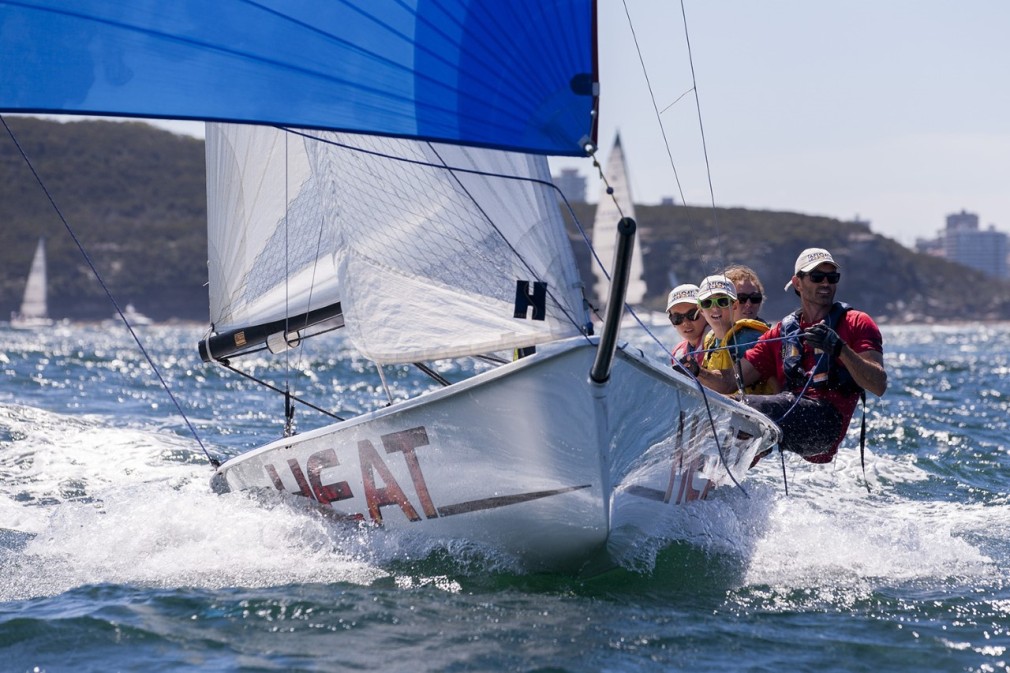
Luke, Lisa and their two boys at Sydney Harbour Regatta 2016 - photo by Andrea Francolini.
What was the Rio Olympics like?
In terms of reporting it was full on but I’m used to doing huge days – just not on a world scale.
Prior to arriving I was worried about everything and listened to all the advice: ‘don’t drink the water’, ‘don’t take your mobile out of your bag’ and was clutching my bag to me those first couple of days.
Within about four days I was riding the subway and taking photos on my phone all the time. The locals were embarrassed by the bad press and were amazingly helpful - if you had your zipper undone on a knapsack even slightly, someone on the train would just tap you and point at it. I’m not sure what it’s like there the rest of the time, but there was such a sense of excitement and the Brazilians were so proud of being hosts that they wanted to showcase their city and their culture.
Coming from the privileged Northern Beaches, some elements, such as the homelessness and security presence were different to what I was used to but overall. Hosting the games was a huge task for the city in terms of the infrastructure and financial commitment, and they made the most of what they had.
The Commonwealth Games in 2018 on the gold Coast – you’ve won a spot there too?
I think the Rio experience is helping me to move into a new multisport category, which is helpful because sailing is seasonal and there’s not always work available. I responded to a call for Expressions of Interest for people seeking a press role and was offered the position of Deputy Venue Press Manager. I’ll be on the Gold Coast and in Brisbane for nine weeks from February to April covering the cycling at the Anna Meares Velodrome and mountain biking at Nerang.
When we first met you were writing articles to add depth to the Mona Vale School’s centenary – are there other subjects you’d like to write about, if you had the time?
I’m passionate about plastics in the ocean; I’m passionate about women in sport, and particularly women in sailing.
I’d like to do some focus pieces on sustainability.
The big one for us is you’re going in the Sydney to Hobart this year Lisa, not just covering it?
My daughter took a gap year this year after her HSC and went to South America so I decided it was my turn to be more fun and interesting. (laughs)
I felt this was the year to get out my comfort zone and so I’m going south on an S&S designed 73-footer called Kialoa II – a beautifully boat built with such craftsmanship which took line honours in 1971. I’m going to sea with an amazing bunch of people who have so much offshore experience – 177 Sydney Hobarts combined between them - that I feel completely safe and comfortable about my decision.
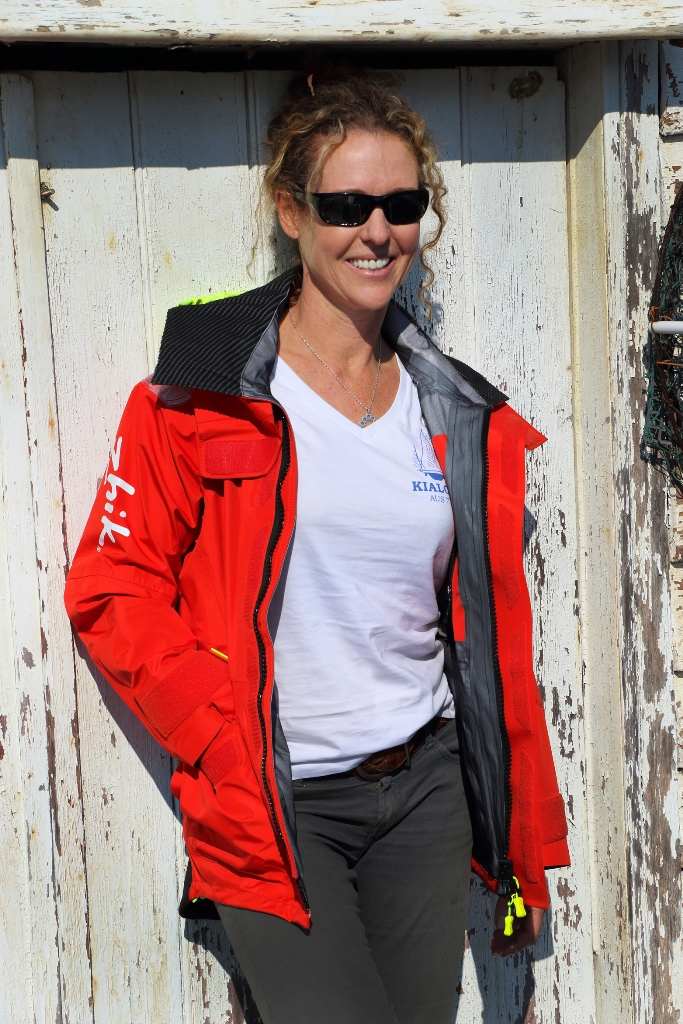
Lisa in her Kialloa II gear - photo by fotokitten
Are you expecting a Bass Strait gale?
Well, it is a challenging race and stretch of water. East Coast lows have been known to develop over the summer period and particularly in Bass Strait where the ocean floor rises up to just 40 metres. The combination has certainly thrown up a few surprises over the years.
The fact that I’m going on a very sturdy boat, which completed the Fastnet this year then sailed 15,000 nautical miles to Sydney, eases any concern. Then there’s the level of experience of the crew. I do have a couple of concerns, one being fatigue and of course seasickness – though I’ve been fine working in huge seas I don’t know how I’ll go over a three to four day non-stop race.
What’s the best part of doing what you do, apart from having your own successful business?
The flexibility of being my own boss works really well with having a family and it lets me choose who I want to work with. It’s not always good from a financial point of view and I have really needed a partner with a steady income to balance out the highs and lows in terms of earnings. Making a living out of sailing in Australia is tough both in terms of media services such as writing and photography plus being a pro crew. There are very few people who can make it work.
Being outdoors and on the water is definitely the highlight; I feel such a connection with the ocean and understanding the wind and the sort of weather it’s likely to generate. I love the fact that I live on Scotland Island and wake up in the morning to see which way the boats are pointing. This gives me a good idea what sort of day it’s going to be weather-wise and I find being able to see the ocean grounding.
The people I’ve met are definitely another reason why I love my job. You’re interviewing people about their sport and usually they are on holidays, sometimes in an amazing location such as Hamilton with thousands of other yachties, It’s not a situation where they have day-to-day pressure like in business, unless they are super competitive, and this is the response I get – people are open, warm, they’re relaxed, they’re happy to talk to you.
There are long days involved for you though – you’re on the water at 6 a.m. some days and your reports come through at midnight – how do you do that all season?
I used to rush to get reports to mainstream media soon after we came off the water but I’m more relaxed these days in terms of deadlines, because the news cycle is 24/7, and because I realise the mainstream press are not particularly interested in sailing, other than the big events like the Rolex Sydney Hobart and America's Cup. Because of the tiny amount of space given to sailing in mainstream media, the whole proliferation of sailing websites and sailing magazines that are website based skyrocketed with the internet boom and in effect every class and club became its only publisher.
My days can be huge. Recently I was covering both the MC38’s and the Couta Boats on the same weekend. I spent the Saturday with the MCs on the harbour and covered the Coutas at night and vica versa I spent Sunday with the Coutas and wrote about the MCs Sunday night.
What are your favourite places in Pittwater and why?
The Basin. I have fond childhood memories of times spent there when we used to have our RL28. When the kids were little we’d anchor stern to on the beach and the kids would play in the sand while we sat in the cockpit drinking tea. Then it would be off to find ‘wobblies’ (wallabies). I also used to go there when I was a child, so it’s very special place for me.
What is your 'motto for life' or a favorite phrase you try to live by?
We have a family saying that comes from Buddhist teachings and it’s along the lines of…
Only speak when the timing is right and what you have to say is both truthful and helpful. This keeps our family conversation really respectful and I’ve learned to live by this saying no matter who I’m talking to.
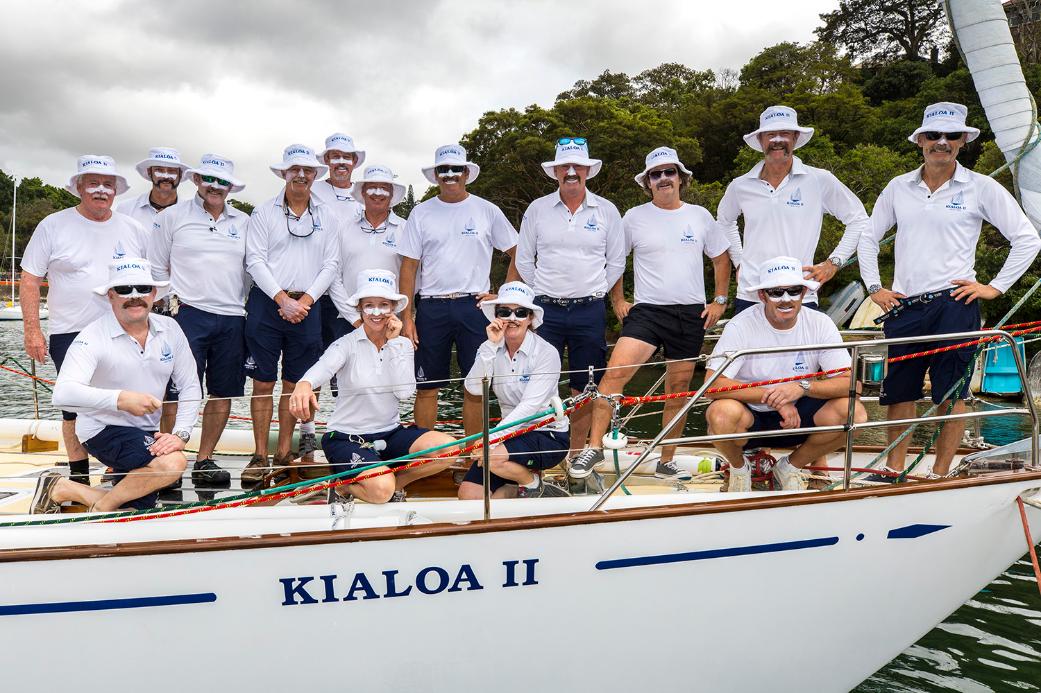
Kialoa II December 19, 2017 crew onboard - photo by by Andrea Francolini.
KIALOA II was designed in 1963 for Jim Kilroy by the premier naval architecture firm of Sparkman and Stephens. One of the biggest differences between Kialoa II, built in 1963 and originally a sloop, and many earlier or similar vintage classics, was the aluminium construction instead of wood.
Kialoa II was one of the first “Maxi” yachts. She was launched in California in 1964, and became one of the most successful yachts of her time.
DESIGNED TO RACE
The boat’s design goal was to compete and win in the maxi ocean racing category. This she did fairly successfully, winning most major ocean races at least once during a racing career that spanned nearly a decade. One of her highlights was winning the gruelling upwind Sydney Hobart Yacht Race in 1971. She also won the 1965 Transpac Race (Los Angeles – Honolulu) in 9 days, 19 hours.
Around 1973 Kialoa II was donated by Jim Kilroy to the United States Coast Guard Academy in New London, CT. She was sailed by midshipmen and officers and entered in local races, including the Bermuda race. In 1978 she was sold by the Coast Guard to a Martin Crowley. After considerable repairs Crowley took her through the Panama Canal to the West Coast. In 1982 she was chartered for the Victoria – Maui race, and was subsequently entered in the Clipper Cup in Hawaii.
Kialoa II was chartered for a while in Maui, and then was brought back to California and put up for sale.
In 1999 Jos Fruytier, a Dutch sailor with a soft spot for historic sailing vessels, flew to Honolulu on Christmas Day and bought her on the spot. A sound hull was one reason that Fruytier decided to point Kialoa’s bow southwest into the South Pacific and begin a 20,000-mile voyage lasting over a year. He flew home periodically to attend to family and business, but eventually delivered Kialoa II to Metur Yachts in Bodrum, Turkey for a full refit, completed in 2003, before continuing to cruise Kialoa II mainly in the Med and northern Europe.
Patrick and Keith Broughton bought the 73’ yawl in 2016 with the view to compete in the classic ocean races as Kialoa II did under Jim Kilroy.
Follow her journeys at: kialoa2.com.au
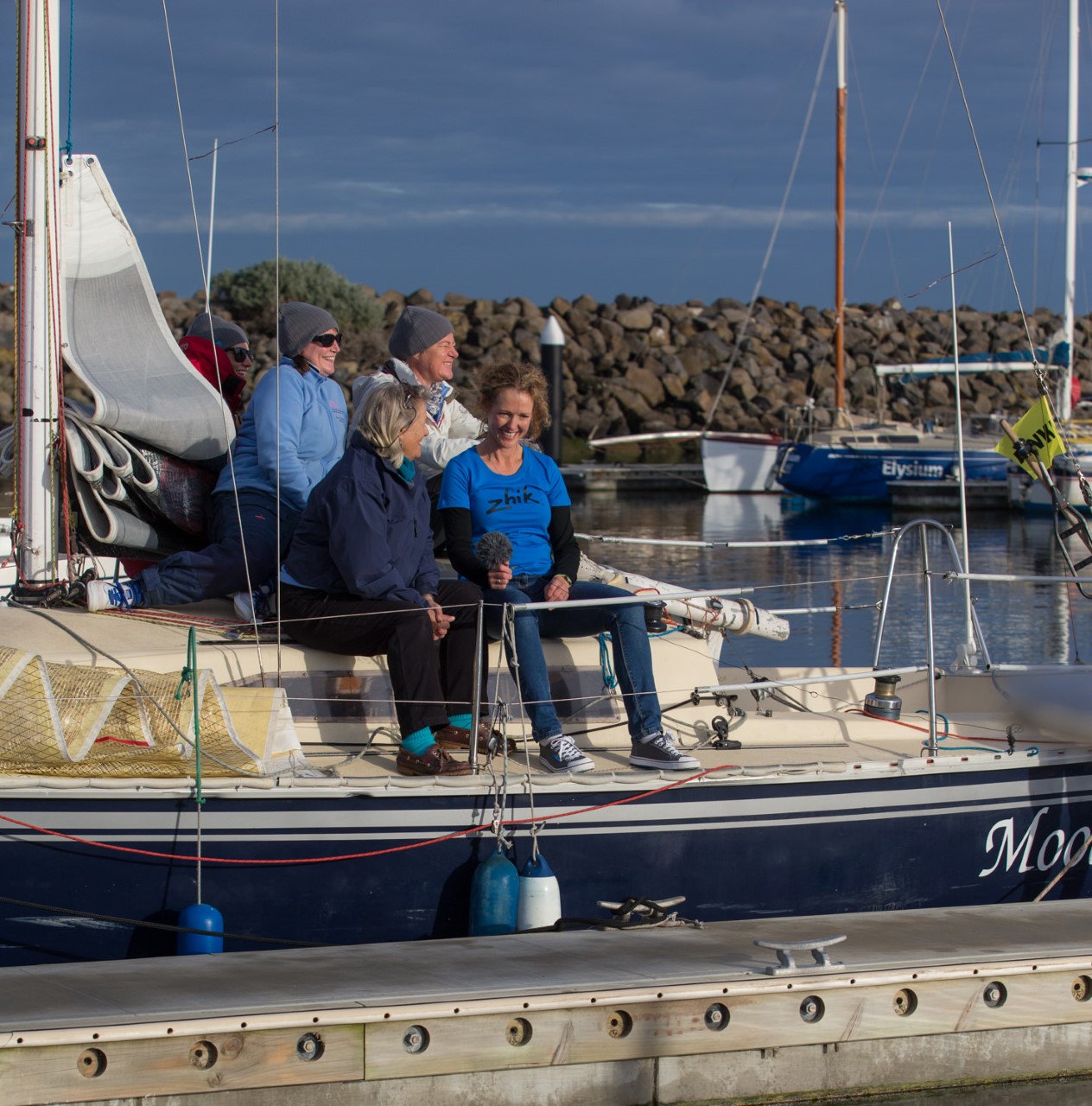
Lisa at AWKR - photo by Bruno Cocozza